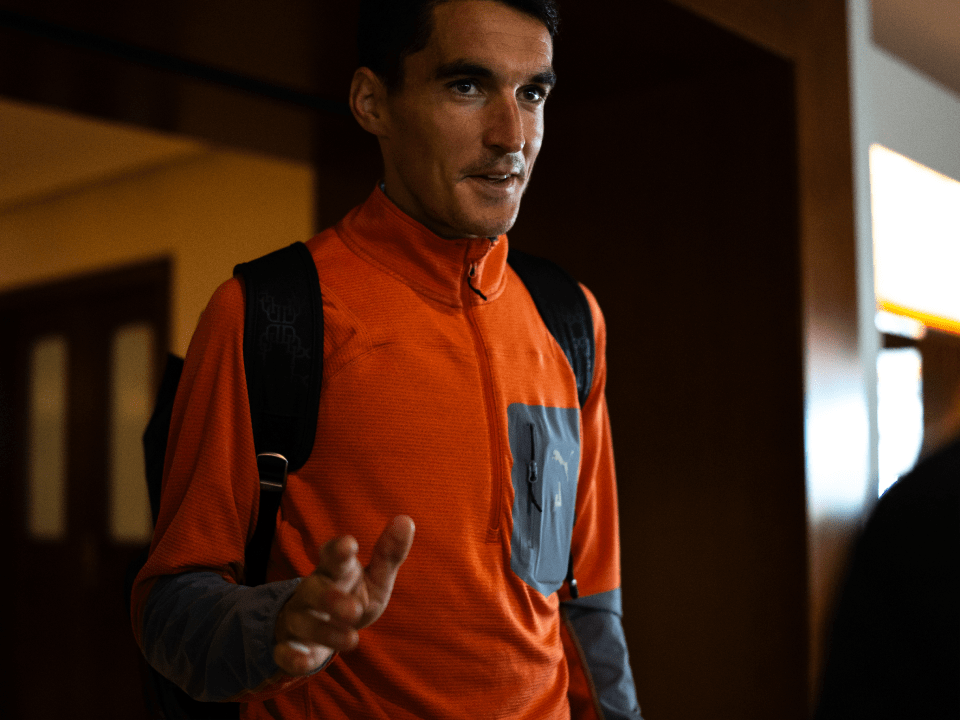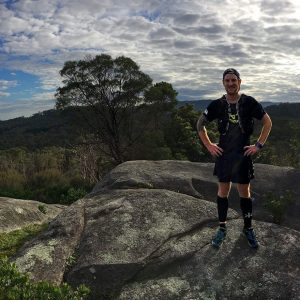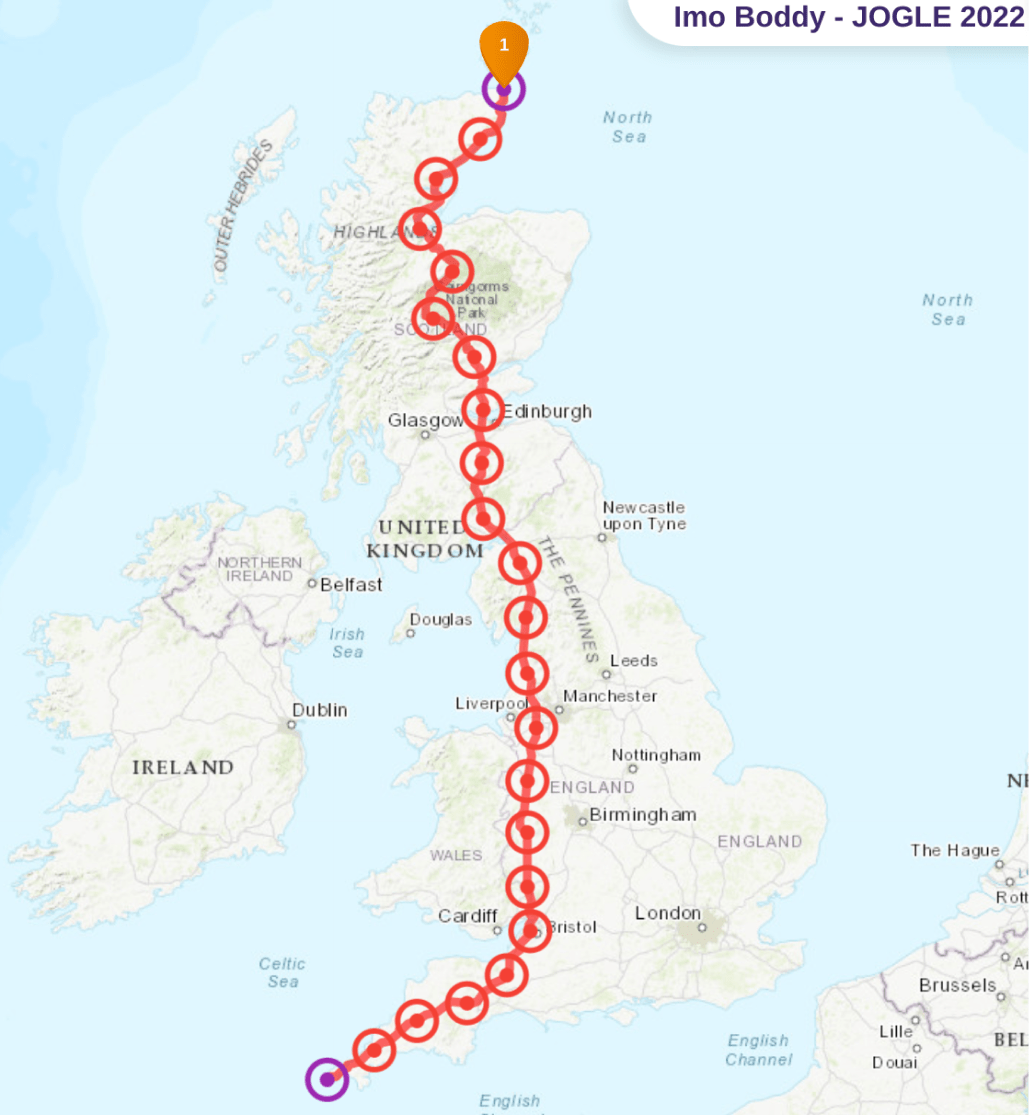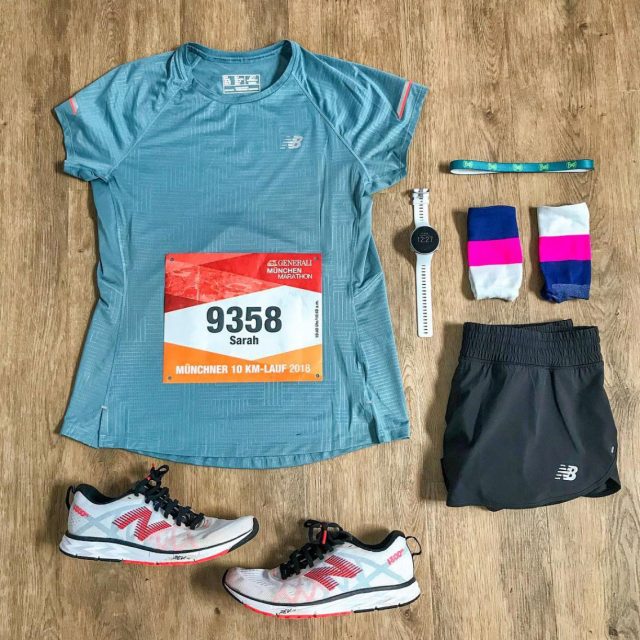Clocking a sub-3 marathon is considered one of working’s greatest objectives however breaking that magic barrier is much from easy. Working a sub-3 marathon takes extra than simply willpower and dedication to a coaching plan, you want to know you’re working the correct miles, in the correct volumes, and on the proper depth to get your physique to the place the place it could pull off the proper race-day efficiency.
I ran my first and solely sub-3 marathon on the London Marathon in 2014. Since then I’ve skilled arduous and tried to repeat it on dozens of events however by no means fairly pulled it off.
I wasn’t fairly hitting the mark.
There’s a advantageous line between success and failure whenever you’re working near the restrict and asking your physique to tug off a feat that’s near the utmost of your athletic functionality. Coaching optimally, staying injury-free, and attending to the beginning line in good situation is half the battle, after which there’s working sensible on race day. All too typically I’ve hit 18 miles on monitor for a 2:50-something however then blown up and flopped over the end line in 3:15 or worse.
So, I used to be searching for a change and when the Polar Vantage V launched – full with working energy from the wrist and improved coaching load, restoration standing, and sleep insights – I needed to search out out if I may use these modern options to assist me get again beneath that golden quantity? That’s how Mission Energy was born.

Mission Energy
Working with Polar’s coaches, the plan was for me to make use of the metrics that watches like Polar Vantage V2 and Polar Pacer Professional present in working energy, cardio and muscle load, improved sleep, and coronary heart fee monitoring, over a 12-week coaching block to see if we may prepare smarter and switch me right into a sub-3 marathon runner as soon as extra.
Getting began: The baseline check
We began with a lactate check. This concerned working units of 800m on the monitor at a steadily growing depth whereas sporting the Polar Vantage V2 and Polar H10 chest strap to measure coronary heart fee.
In between every rep, the crew of specialists from St Mary’s College in London pricked my ear and took blood, which was later analyzed to offer insights into my lactate ranges.
From this, we had been in a position to decide my lactate threshold and set my coronary heart fee coaching zones.

Utilizing the working energy knowledge tracked by the watch, we had been additionally in a position to set energy coaching zones for my regular, threshold, and interval efforts.
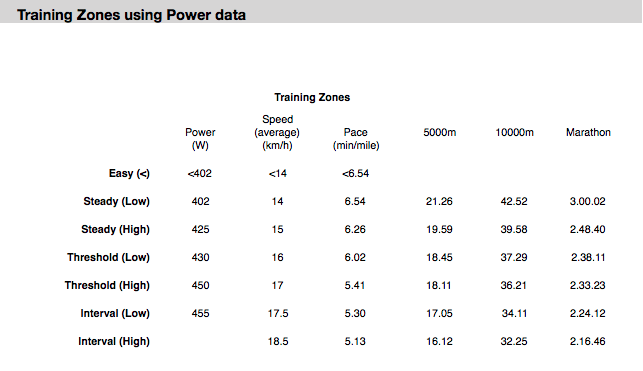
In follow, what this meant was that each time I ran in coaching, I now had 3 ways to watch the depth of every of my runs, coronary heart fee, energy, and tempo.
The stats from the assessments additionally revealed that I used to be greater than able to sustaining a sub-3 tempo however that I’d been neglecting the brink work that’d actually give me the perfect shot at placing in 26.2 miles at this tempo.
All of this information was then used to create my coaching plan.
The sub-3 marathon coaching plan
The plan adopted a 12-week coaching block, with a heavy emphasis on threshold working. To start with, my weeks had threshold runs on Tuesdays and Thursdays, some hill sprints with a little bit of threshold on Saturday, and a straightforward run on Sunday. With a little bit of power and conditioning and relaxation on the opposite days.
Whereas prior to now I’d usually run my threshold runs based mostly on coronary heart fee alone, this time I used energy and coronary heart fee. As a result of energy gives an immediately responsive information to depth – versus coronary heart fee which might lag a bit – it helped me to make sure I used to be hitting the correct stage of effort from the very first step.
By monitoring each coronary heart fee and working energy my coaching classes had been optimized to get the utmost from each minute. That’s very important when you’ve acquired a day job to carry down whilst you’re capturing for a sub-3 marathon.
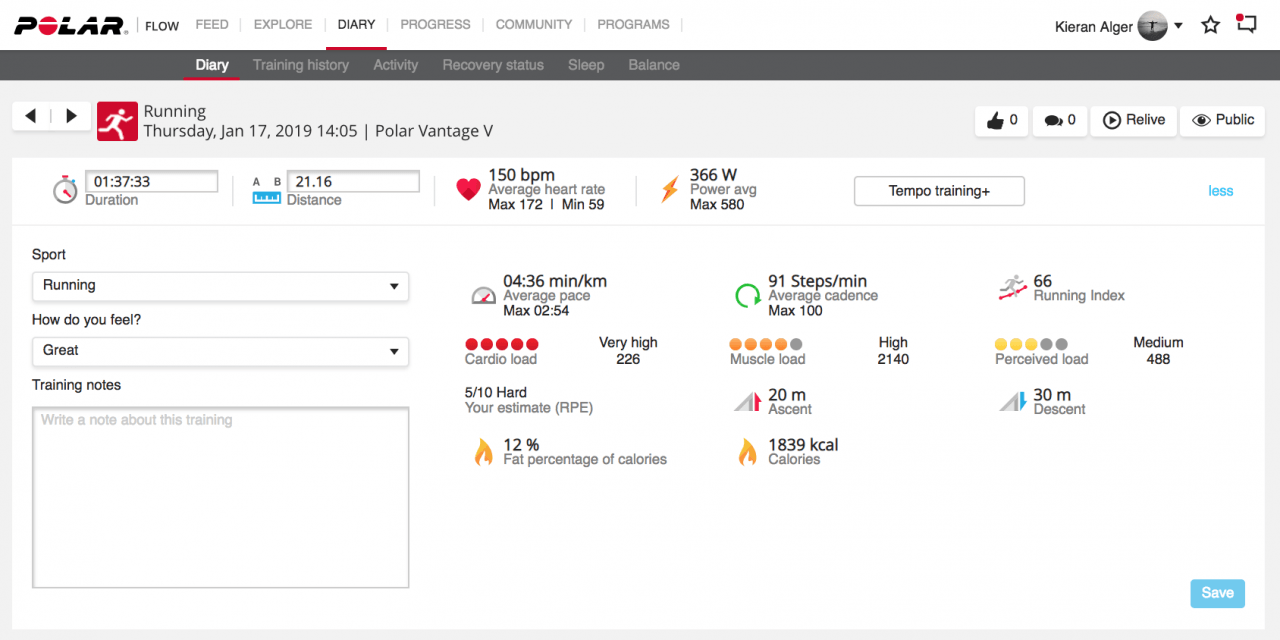
Abstract of a threshold run
I’d additionally just lately run 190 miles in three days alongside the Thames from supply to sea, and so we additionally knew that I needed to watch my coaching load fastidiously. So we did common coronary heart fee variability-based orthostatic assessments – at the least as soon as each three days – utilizing the H10 chest strap in order that we may hold monitor of my restoration and see how the coaching load was constructing.
This proved to be essential. Only a few weeks into the plan, I went out for a threshold session and all the things felt unsuitable. I used to be preventing to hit the ability ranges, my physique felt burdened and I felt demoralized. Till I phoned my coach and went by way of the Polar Circulate knowledge.
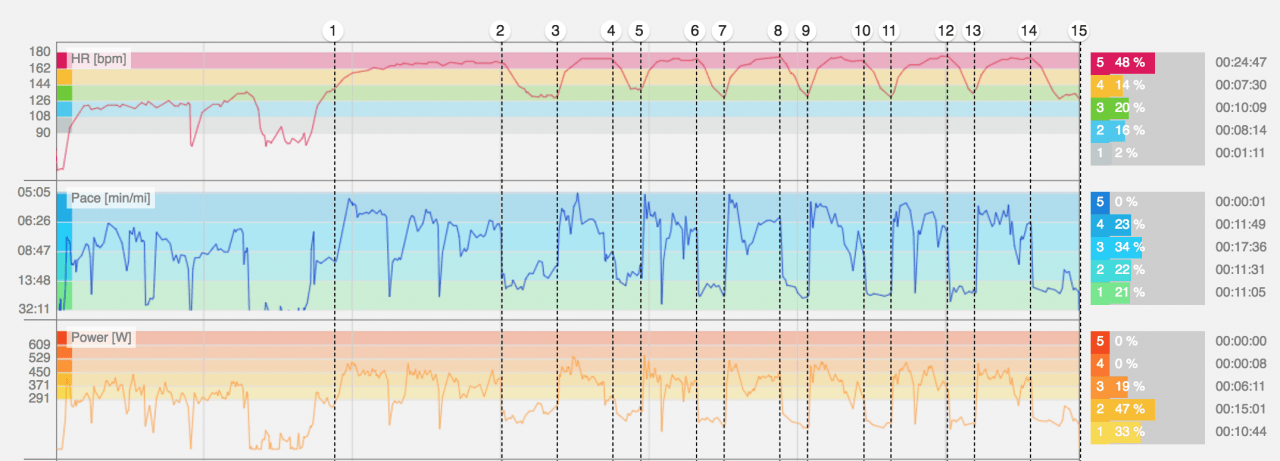
Charts from pushing too arduous into zone 5 on a threshold run
What we noticed immediately was that I used to be overreaching – heading into the orange zone in Polar Circulate’s coaching load monitoring – and at risk of sickness or damage in consequence. My coach may see that I’d additionally been going out a bit too scorching in a few of my classes. We adjusted my coaching schedule, retaining the kind of runs, however transferring across the timings to assist in giving me extra time to get better.
Inside a couple of days, I used to be again within the inexperienced zone, feeling significantly better bodily and mentally. The coaching load and restoration insights had supplied goal knowledge to again up what I’d been feeling on the market on the roads and we had been in a position to reply in time to repair it.
Mastering hill working with energy
A lot of my coaching was performed within the New Forest the place the roads and tracks round me are ‘undulating’. We’re not speaking mountain path steep however you’ll be able to’t run removed from my entrance door earlier than you hit first rate inclines, a few of them the worst variety, the hidden, creeping hill.
And this will wreak havoc along with your capability to run to the depth your coach has set you. The center fee lag can imply you don’t know you’re overcooking it till you crest the hill, working on the identical tempo up a hill in your future is assured to imply you’re placing extra pressure in your system than maybe your coach has deliberate. That’s the place energy is available in.
As a result of energy exhibits you precisely the extent of effort you’re placing in, in real-time, you’ll be able to modify extra simply. You merely run to at least one quantity whether or not you’re on the up or the flat, and your tempo naturally decreases. It’s a solution to flatten out the hills when it comes to guaranteeing you follow the coaching depth you’ve gotten in your plan.
Transferring nearer to the aim
Over the course of the 12 weeks, I used to be in a position to make use of the Working Index Report to trace my enchancment. My transferring common rating jumped from 57 to 66 over the course of the coaching block. The expected instances this additionally provided up gave me confidence, as a result of I may see after every run that my coaching was transferring me nearer to my sub-3 aim.
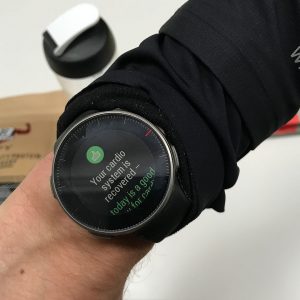
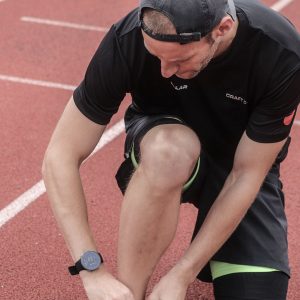
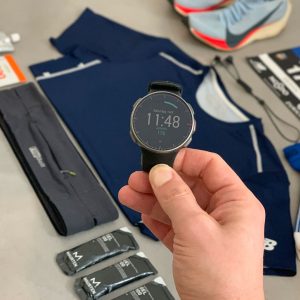
One other essential facet of this was my sleep. A fast look at my sleep knowledge from the Polar Vantage V2 confirmed that I wasn’t getting practically sufficient and that my sleep continuity – the uninterrupted hours of sleep – was low. I can’t say we remodeled that however I labored to enhance it, to assist my physique get extra of probably the most very important a part of restoration there may be.
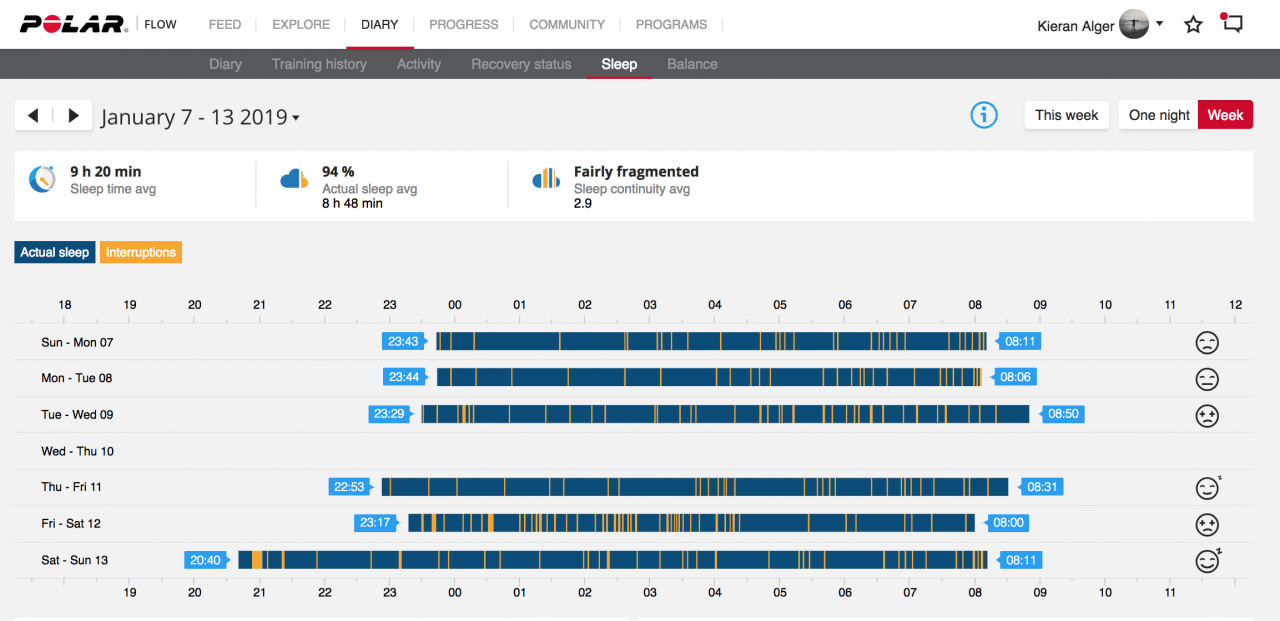
Sleep knowledge
The massive race
After 12 weeks of arduous work, we put Mission Energy to the check on the Seville Marathon. Ten days earlier than the race I used to be hit by a chilly and as soon as once more the Vantage V2 proved invaluable.
With common orthostatic assessments and a few simple 30-minute runs, we had been in a position to delve into the center fee knowledge to see if my system was recovering or if I wanted to hold on resting. It wasn’t till the day earlier than the race that my coronary heart fee normalized on my shake-out run.
For the race, I arrange my Vantage V2 to have a split-screen exhibiting tempo, energy, and coronary heart fee. The mix of the metrics meant I used to be in a position to run a sensible, regular race, avoiding the widespread errors of going out too quick.
Having run a half marathon three weeks earlier at marathon tempo, I knew precisely what energy I may keep with out blowing up. And I caught to it as a lot as potential.
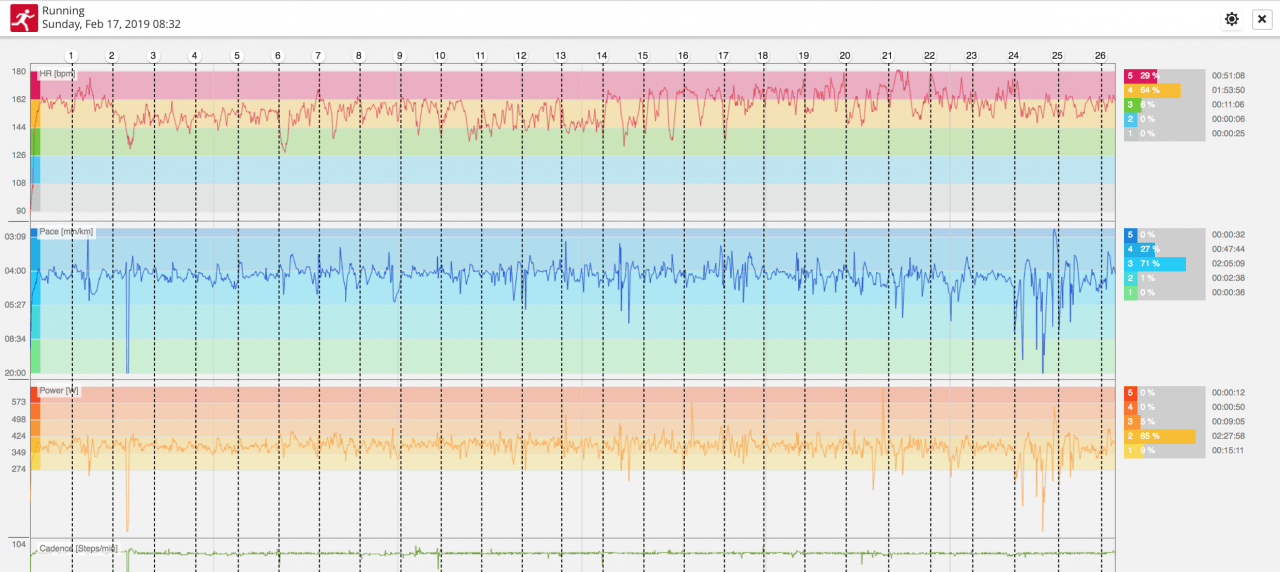
Seville Marathon charts
The top outcome was some of the evenly paced marathons I’ve run in 41 marathons. Sure, it nonetheless harm from mile 22, however there was no blowing up at 18 and I used to be at all times in management.
I ultimately crossed the end line in 2:57:05 – a brand new PB and my second sub-3 marathon had been within the bag.
For extra working ideas by Kieran Alger, take a look at his weblog Man v Miles.
In the event you preferred this submit, don’t overlook to share in order that others can discover it, too.


